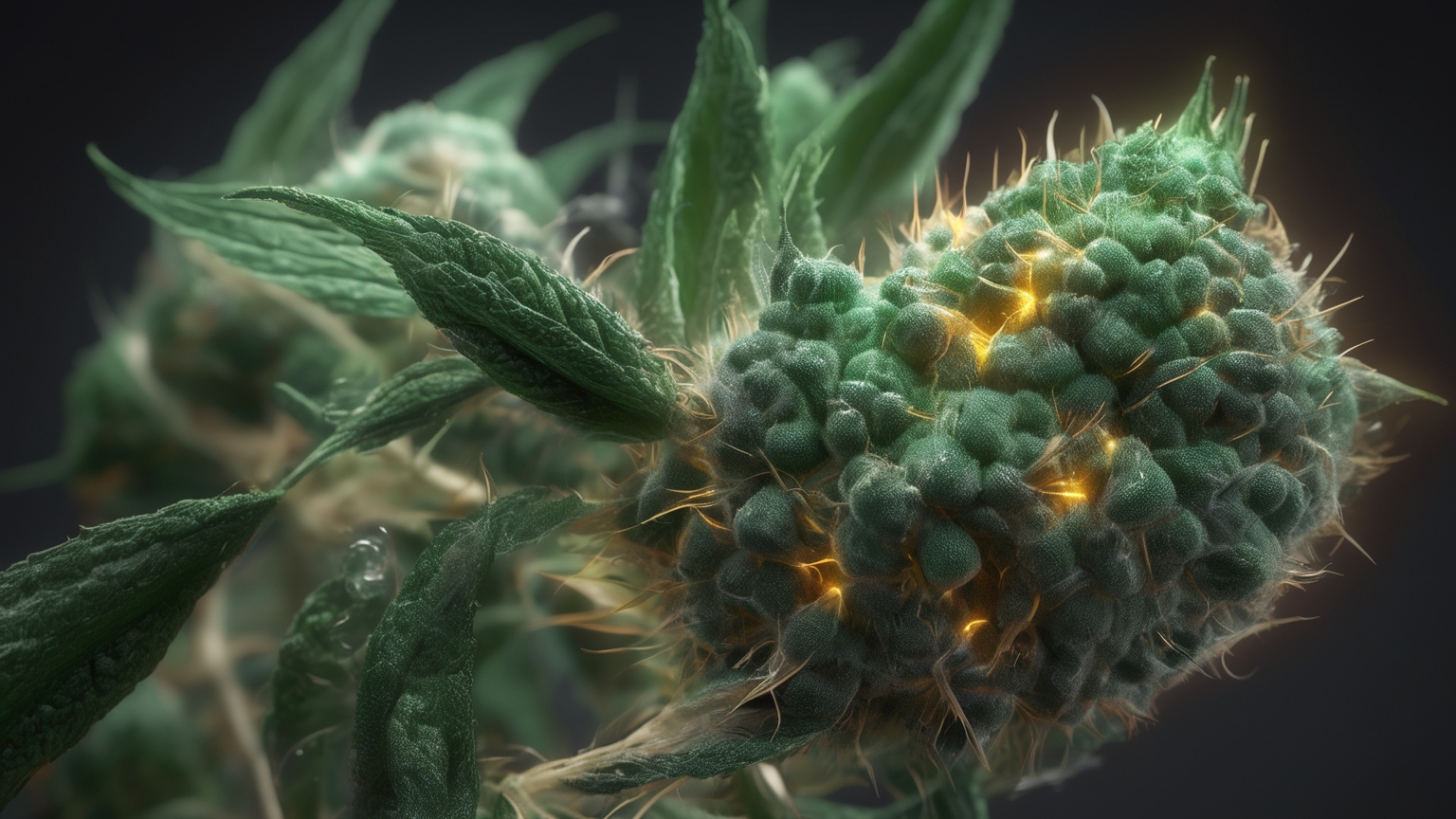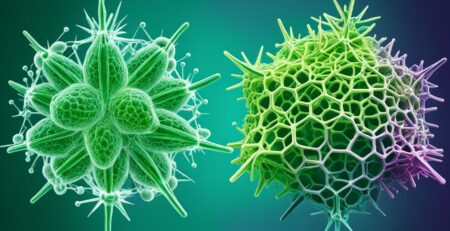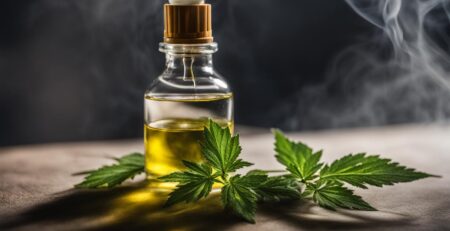Exploring The Science of CBD Absorption Through Skin
The increase in the legalization and acceptance of medical cannabis has led to scientific interest in the therapeutic benefits of cannabinoids, including CBD, for various systemic and topical indications. CBD, a non-psychotropic cannabinoid, has shown promising therapeutic benefits for conditions such as anxiety, anorexia, chemotherapy-induced nausea, seizures, glaucoma, and skin disorders.
The skin is a target for CBD due to the presence of cannabinoid receptors in the skin that mediate anti-inflammatory responses. CBD exhibits anti-inflammatory, antioxidant, and antiproliferative effects, making it a valuable treatment for inflammatory skin disorders. Delivering CBD through the skin can provide targeted local effects with minimal systemic side effects. However, the lipophilic nature of CBD and its tendency to accumulate in the outermost layer of the skin, the stratum corneum, present challenges for deeper penetration. Permeation enhancement strategies may be necessary to achieve sufficient permeation for CBD to reach deeper skin layers.

Key Takeaways:
- CBD has shown promising therapeutic benefits for various conditions, including skin disorders.
- The presence of cannabinoid receptors in the skin plays a role in mediating the anti-inflammatory effects of CBD.
- The lipophilic nature of CBD presents challenges for deeper penetration into the skin.
- Permeation enhancement strategies may be necessary to improve CBD's permeation through the skin.
- Further research is needed to optimize CBD's delivery and maximize its therapeutic potential.
The Role of Cannabinoid Receptors in CBD Skin Absorption
CBD interacts with cannabinoid receptors in the skin, specifically cannabinoid receptor type 1 (CB1) and cannabinoid receptor type 2 (CB2). These receptors play a crucial role in mediating the anti-inflammatory responses of CBD. Through its interaction with CB1 and CB2 receptors, CBD has been shown to reduce pro-inflammatory cytokine levels and increase anti-inflammatory cytokine levels in the skin. This mechanism of action contributes to the therapeutic effects of CBD in inflammatory skin disorders such as dermatitis, psoriasis, and acne.
Furthermore, CBD exhibits antioxidant effects, helping to protect the skin from oxidative stress and damage. It also inhibits the proliferation of keratinocytes, which are cells that contribute to the thickening and scaling of the skin in conditions like psoriasis. By targeting these cellular processes, CBD can help alleviate symptoms and improve the overall health of the skin.
“CBD interacts with cannabinoid receptors in the skin, specifically cannabinoid receptor type 1 (CB1) and cannabinoid receptor type 2 (CB2).”
The interaction of CBD with cannabinoid receptors provides a scientific basis for its potential therapeutic benefits in various skin conditions. By modulating inflammatory responses, reducing oxidative stress, and inhibiting abnormal cell proliferation, CBD offers a promising avenue for the development of new skincare products and treatments.
Challenges and Strategies for CBD Skin Permeation
When it comes to delivering CBD through the skin, there are several challenges that need to be overcome. One of the main challenges is the lipophilic nature of CBD, which means it has a strong affinity for fats and oils. This characteristic makes it difficult for CBD to penetrate deeper into the skin layers. Additionally, CBD has a tendency to accumulate in the outermost layer of the skin, known as the stratum corneum, leading to a depot formation that further hinders its permeation. To address these challenges, various permeation enhancement strategies can be employed to improve the delivery of CBD.
One strategy is the use of chemical permeation enhancers. These enhancers can disrupt the stratum corneum and improve the passive permeation of CBD through the skin. They work by increasing the fluidity of the stratum corneum and enhancing the solubility of CBD in the skin. However, it is important to note that the use of permeation enhancers should be carefully considered to ensure their safety and effectiveness.
Another approach to enhance CBD permeation is by incorporating essential oils into CBD formulations. Essential oils such as peppermint, lavender, and eucalyptus oil have been found to have permeation-enhancing properties. These natural oils can improve the overall effectiveness of CBD by enhancing its permeation through the skin. They can be used in combination with other permeation enhancement strategies to optimize the delivery of CBD.
The Pharmacokinetics of Topical CBD Absorption
Understanding the pharmacokinetics of topical CBD absorption is essential in maximizing its therapeutic potential. Studies have been conducted to evaluate the bioavailability, plasma concentration, and absorption rate of CBD when applied topically. These findings provide valuable insights into the effectiveness of transdermal CBD delivery and inform formulation development for optimal skin permeation.
Research has shown that CBD can be absorbed into systemic circulation through transdermal administration, highlighting its potential for targeted local effects with minimal systemic side effects. The rate of CBD absorption through the skin has been found to be faster compared to THC, another prominent cannabinoid. This suggests that CBD may offer quicker onset of action when applied topically.
To better understand the pharmacokinetics of topical CBD absorption, various parameters have been measured, including the maximum concentration of CBD in plasma, the time it takes to reach maximum concentration, the area-under-the-curve, the absorption rate constant, the terminal elimination rate constant, and the terminal half-life. These measurements provide valuable information on how CBD is metabolized and eliminated from the body, aiding in dosing recommendations and therapeutic potential assessment.
| Pharmacokinetic Parameters | Measurements |
|---|---|
| Bioavailability | Percentage of CBD absorbed into systemic circulation |
| Maximum Concentration | Highest plasma concentration of CBD reached |
| Time to Maximum Concentration | Duration taken to reach maximum plasma concentration |
| Area-under-the-curve | Total exposure of CBD in plasma over time |
| Absorption Rate Constant | Rate at which CBD is absorbed through the skin |
| Terminal Elimination Rate Constant | Rate at which CBD is eliminated from the body |
| Terminal Half-life | Time taken for CBD concentration to decrease by half |

“The rate of CBD absorption through the skin has been found to be faster compared to THC, another prominent cannabinoid.”
By understanding the pharmacokinetics of topical CBD absorption, researchers can further optimize transdermal delivery systems and explore the full therapeutic potential of CBD. Future studies should continue to investigate the efficacy and safety of transdermal CBD formulations through double-blind, randomized, placebo-controlled trials. This will provide more robust evidence on the benefits of CBD when applied topically and aid in personalized CBD therapy for individuals seeking targeted relief.
Safety and Tolerability of Transdermal CBD Delivery
When it comes to transdermal CBD delivery, safety and tolerability are of utmost importance. Clinical studies have shown that transdermal CBD delivery systems are well-tolerated and have minimal psychoactive effects, making them suitable for individuals seeking the therapeutic benefits of CBD without experiencing psychotropic effects. The use of CBD transdermal delivery systems has been found to be safe and does not cause significant adverse events.
To assess the safety profile of transdermal CBD delivery, clinical chemistry analysis and hematology analysis are conducted. These analyses evaluate the impact of CBD on various parameters such as liver enzymes, kidney function, blood cell counts, and other important biomarkers. Additionally, adverse events are closely monitored and assessed to ensure the safety of transdermal CBD delivery.
It is worth noting that transdermal CBD delivery systems are designed to deliver CBD directly into the bloodstream, bypassing the digestive system. This route of administration may minimize potential drug interactions and reduce the risk of gastrointestinal side effects often associated with oral CBD consumption. Overall, the safety and tolerability of transdermal CBD delivery make it a promising option for individuals seeking targeted CBD therapy.
Table: Safety and Tolerability of Transdermal CBD Delivery
| Assessment | Results |
|---|---|
| Clinical Chemistry Analysis | No significant abnormalities detected in liver enzymes, kidney function, and other biomarkers. |
| Hematology Analysis | No significant changes observed in blood cell counts. |
| Adverse Events Assessment | Minimal adverse events reported, indicating good tolerability. |
In conclusion, transdermal CBD delivery has demonstrated a favorable safety and tolerability profile, with minimal psychoactive effects and few adverse events. The use of clinical chemistry analysis, hematology analysis, and adverse events assessment provides valuable insights into the safety of transdermal CBD delivery systems. Further research and clinical studies are needed to expand our understanding of the long-term safety and tolerability of transdermal CBD delivery and to optimize its therapeutic potential.
The Potential of CBD and THC Combination in Transdermal Delivery

Combining CBD and THC in transdermal delivery systems shows great potential for enhancing therapeutic benefits. These two prominent phytocannabinoids have distinct effects on the body, and when used together, they may create synergistic effects. CBD is known for its anti-inflammatory, antioxidant, and antiproliferative properties, making it valuable for treating various skin disorders. THC, on the other hand, has analgesic and euphoric effects that can complement CBD's therapeutic actions.
By incorporating both CBD and THC in transdermal delivery systems, it is possible to create a balanced cannabinoid profile that optimizes therapeutic effects. This combination may provide enhanced pain relief, reduced inflammation, and improved overall well-being. Transdermal cannabinoid delivery offers a localized approach, targeting specific areas of the skin, while minimizing the psychoactive effects associated with THC ingestion or inhalation.
The potential of CBD and THC combination in transdermal delivery is an exciting area of research, with the aim of developing effective and safe formulations for various conditions. However, further studies are needed to determine the optimal ratio of CBD to THC and explore the potential interactions between these cannabinoids. By understanding the synergistic effects of CBD and THC in transdermal delivery, we can unlock new possibilities for improving the therapeutic outcomes of cannabinoid-based treatments.
Individual Variability in Transdermal CBD Absorption
When it comes to transdermal CBD absorption, there is significant individual variability. Various factors can influence the rate and extent of CBD absorption through the skin, making it essential to understand these factors for personalized CBD therapy and optimizing therapeutic outcomes.
The first factor to consider is individual skin characteristics. The condition and health of the skin, such as its thickness, hydration levels, and presence of any skin conditions, can affect how CBD is absorbed. For example, individuals with dry or damaged skin may experience slower absorption compared to those with healthy skin. Additionally, varying levels of sebum production can impact the skin's ability to absorb CBD.
Metabolism is another crucial factor that influences CBD absorption. The body's metabolism can vary from person to person, affecting how quickly CBD is broken down and eliminated. Individuals with faster metabolism may experience quicker absorption and clearance of CBD, while those with slower metabolism may have a longer duration of CBD presence in the body.
Other physiological factors, such as blood flow to the skin and individual immune responses, can also contribute to individual variability in transdermal CBD absorption. These factors highlight the importance of personalized CBD therapy and the need for further research to better understand and predict individual responses to transdermal CBD delivery.
Factors Affecting CBD Absorption
| Factor | Impact on CBD Absorption |
|---|---|
| Skin Characteristics | Thickness, hydration, skin conditions |
| Metabolism | Speed of CBD breakdown and elimination |
| Physiological Factors | Blood flow to the skin, immune responses |
Future Directions in Transdermal CBD Research
As the field of CBD research continues to expand, there are several key areas that warrant further investigation in the realm of transdermal CBD delivery. Future directions in this area should prioritize conducting double-blind, randomized, placebo-controlled studies to yield more robust evidence regarding the efficacy and safety of transdermal CBD formulations. These studies will provide valuable insights into the therapeutic potential of CBD, allowing for more informed decision-making in clinical practice.
Pharmacokinetic studies are also necessary to fully understand the absorption, distribution, metabolism, and excretion of CBD after transdermal application. By exploring how CBD is processed by the body, researchers can gain a better understanding of its bioavailability and optimize dosing recommendations for various indications.
Furthermore, future research should focus on addressing individual variability in transdermal CBD absorption. Factors such as skin characteristics, metabolism, and other physiological variables can significantly impact the rate and extent of CBD absorption through the skin. By exploring these variables, researchers can develop personalized CBD therapies that consider individual patient needs and optimize therapeutic outcomes.
Finally, innovative delivery systems and formulation strategies should be explored to enhance the bioavailability and skin permeation of CBD. Novel approaches may involve the use of advanced technologies, such as nanocarriers or transdermal patches, to improve CBD delivery. Additionally, the incorporation of essential oils known for their permeation-enhancing properties, such as peppermint, lavender, and eucalyptus oil, could further enhance the effectiveness of transdermal CBD formulations.
| Future Directions in Transdermal CBD Research | Benefits |
|---|---|
| Double-blind, randomized, placebo-controlled studies |
|
| Pharmacokinetic studies |
|
| Addressing individual variability |
|
| Innovative delivery systems and formulation strategies |
|
The Importance of CBD Concentration in Transdermal Delivery
When it comes to transdermal CBD delivery, the concentration of CBD in the formulation plays a critical role in its percutaneous absorption. Percutaneous absorption refers to the process by which CBD penetrates the skin and enters the systemic circulation. Understanding the impact of CBD concentration on percutaneous absorption is crucial for optimizing CBD delivery into deeper skin layers and maximizing its therapeutic effects.
Recent pharmacokinetic studies have shown that higher CBD concentrations in transdermal formulations can lead to increased percutaneous absorption. This means that higher concentrations of CBD can result in greater amounts of CBD being absorbed through the skin and reaching the targeted areas of the body. However, it is important to strike a balance, as excessively high concentrations may not necessarily lead to better therapeutic outcomes and may increase the risk of adverse effects.
| CBD Concentration | Percutaneous Absorption |
|---|---|
| Low concentration | Lower percutaneous absorption |
| Optimal concentration | Optimal percutaneous absorption for therapeutic effects |
| Excessively high concentration | Potential for increased risk of adverse effects |
It is important for formulation developers and clinicians to consider the optimal CBD concentration based on the specific therapeutic goals and target population. Factors such as the desired duration of action, intended site of action, and individual patient variability should be taken into account when determining the appropriate CBD concentration in transdermal delivery systems.
The Promising Role of Essential Oils in CBD Transdermal Formulations
Essential oils, such as peppermint, lavender, and eucalyptus oil, have emerged as valuable components in CBD transdermal formulations due to their permeation-enhancing properties. These natural oils have the ability to improve the effectiveness of CBD by enhancing its permeation through the skin, ultimately optimizing its therapeutic benefits.
Peppermint oil, known for its refreshing aroma and cooling sensation, has been shown to enhance the permeation of CBD through the skin. Its menthol content acts as a penetration enhancer, assisting CBD in reaching deeper skin layers. Lavender oil, renowned for its calming properties, has also been found to facilitate CBD permeation by improving skin absorption. Eucalyptus oil, with its invigorating scent and anti-inflammatory effects, can further enhance the transdermal delivery of CBD.
These essential oils offer a natural and synergistic approach to CBD transdermal delivery. By combining CBD with these oils, formulation developers can harness their permeation-enhancing properties to optimize CBD absorption and distribution in the skin. However, further research is needed to explore the potential benefits and formulation considerations of incorporating essential oils into CBD transdermal delivery systems.
Conclusion
In conclusion, the science of CBD absorption through the skin has revealed exciting potential for therapeutic applications. CBD interacts with cannabinoid receptors in the skin, particularly CB1 and CB2 receptors, which play a significant role in mediating its anti-inflammatory effects. The lipophilic nature of CBD and its tendency to accumulate in the outermost layer of the skin present challenges for deeper penetration, but permeation enhancement strategies, such as the use of chemical permeation enhancers and essential oils, can help overcome these obstacles.
Studies have examined the pharmacokinetics of topical CBD absorption, revealing faster absorption rates compared to THC. Transdermal CBD delivery has been found to be safe and well-tolerated, with minimal psychoactive effects. However, individual variability in CBD absorption highlights the importance of personalized therapy and optimizing dosage for optimal therapeutic outcomes.
Looking to the future, further research is needed, including double-blind, randomized, placebo-controlled studies, to investigate the efficacy and safety of transdermal CBD formulations. Additionally, exploring innovative delivery systems and formulation strategies can improve the bioavailability and skin permeation of CBD.
In summary, the science of CBD absorption through the skin offers promising possibilities for the treatment of various conditions. Understanding the role of cannabinoid receptors, addressing challenges in transdermal delivery, investigating pharmacokinetics, ensuring safety, and conducting future research will advance our knowledge and maximize the therapeutic potential of transdermal CBD absorption.
FAQ
What are the therapeutic benefits of CBD for skin disorders?
CBD has shown promising therapeutic benefits for conditions such as anxiety, anorexia, chemotherapy-induced nausea, seizures, glaucoma, and skin disorders.
How does CBD interact with the skin?
CBD interacts with cannabinoid receptors in the skin, specifically cannabinoid receptor type 1 (CB1) and cannabinoid receptor type 2 (CB2), which mediate anti-inflammatory responses.
What challenges are there in delivering CBD through the skin?
The lipophilic nature of CBD and its tendency to accumulate in the outermost layer of the skin present challenges for deeper penetration. Permeation enhancement strategies may be necessary to achieve sufficient permeation.
What strategies can be used to enhance CBD permeation through the skin?
Permeation enhancement strategies include the use of chemical permeation enhancers and essential oils, such as peppermint, lavender, and eucalyptus oil.
What is the pharmacokinetics of topical CBD absorption?
Topical CBD absorption has been studied to understand its bioavailability and plasma concentration. CBD can be absorbed into systemic circulation via transdermal administration.
Is transdermal CBD delivery safe?
Transdermal CBD delivery has been found to be safe and well-tolerated, with minimal psychoactive effects.
Is there variability in CBD absorption through the skin?
Yes, there is significant individual variability in transdermal CBD absorption, influenced by factors such as skin characteristics and metabolism.
What should future research in transdermal CBD delivery focus on?
Future research should focus on conducting double-blind, randomized, placebo-controlled studies to further investigate the efficacy and safety of transdermal CBD formulations.
How does CBD concentration affect percutaneous absorption?
The concentration of CBD in transdermal delivery formulations plays a crucial role in percutaneous absorption, and further research is needed to evaluate its impact.
Are essential oils beneficial in CBD transdermal formulations?
Yes, essential oils such as peppermint, lavender, and eucalyptus oil have permeation-enhancing properties and can improve the effectiveness of CBD in transdermal delivery systems.
What does the science of CBD absorption through the skin tell us?
The science of CBD absorption through the skin provides insights into the role of cannabinoid receptors, challenges in transdermal delivery, pharmacokinetics, safety, individual variability, and future research directions.
Source Links
- https://www.ncbi.nlm.nih.gov/pmc/articles/PMC9859876/
- https://www.ncbi.nlm.nih.gov/pmc/articles/PMC7736837/
- https://www.sciencedirect.com/science/article/abs/pii/S0378517322000941











Leave a Reply